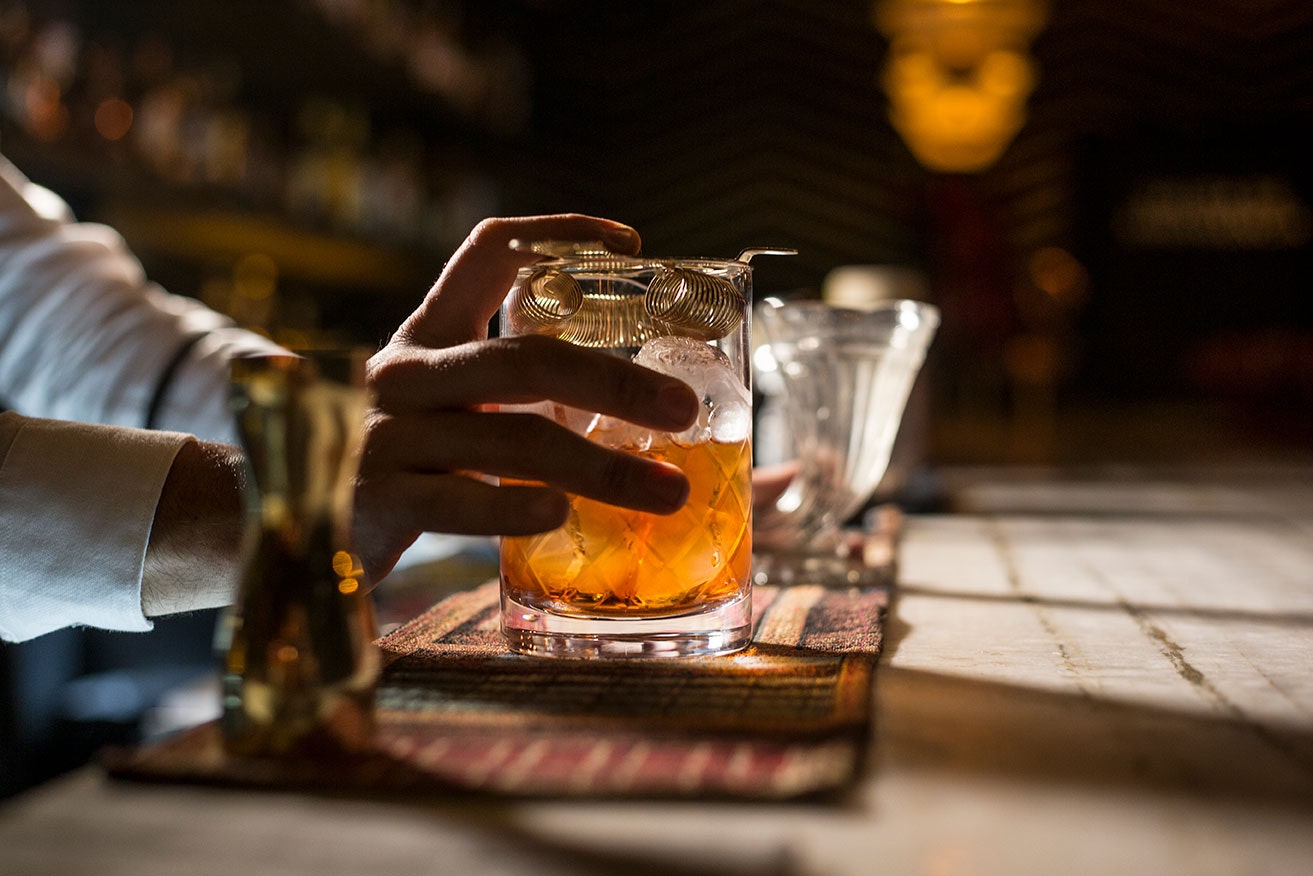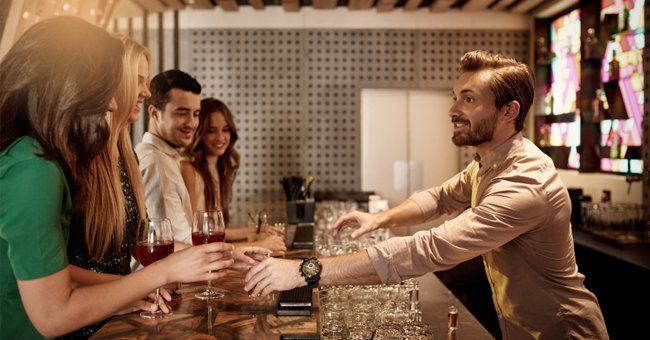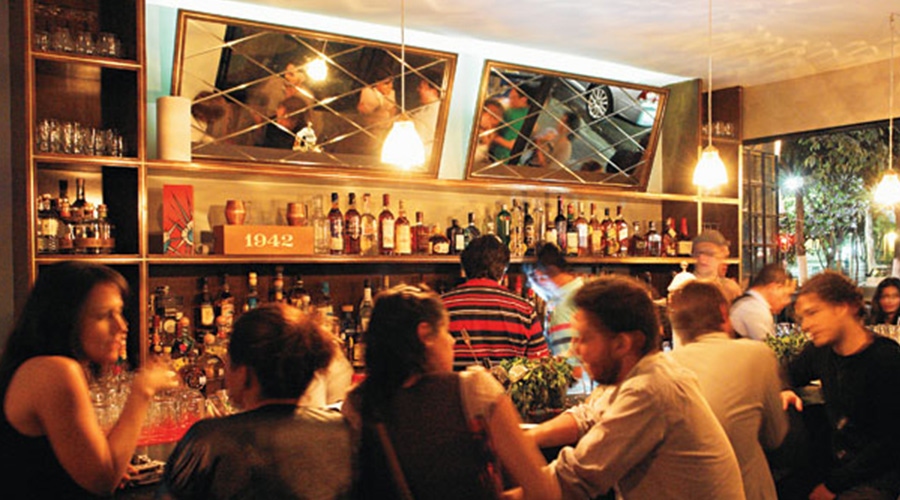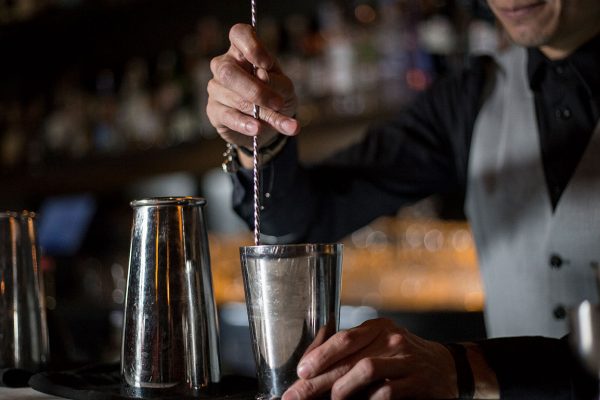
Is this the job description of a barista or a bartender?
It’s easy to recognize the countless overlapping elements between these two professions. And even beyond these similarities, there are deeper shared career challenges and rewards that connect the barista and bartending worlds.
But even as the two industries have converged, there are significant gaps between baristas and bartenders that prevent them from reaching greater potential as beverage professionals. There are many lessons that they can learn from each other to enhance their skills and satisfaction on the job.
The Barista-Bartender Divide
On the one hand, coffee shops are places of comfort and rejuvenation. The average coffee shop visitor uses the café space to escape from the stresses of the day, to catch up with friends, or get some work done on a laptop. And with coffee shops open in the morning and afternoon, baristas operate in a mostly drama-free time of day.
A typical bar, on the other hand, has the opposite energy. Bar patrons might also visit their favorite watering holes to unwind after a long day, but they might go to meet new people, dance, and loosen their inhibitions with the effects of alcohol: they can become excitable or sloppy and create difficult environments for bartenders to manage.
Hillary Mugasitsi is a bartender and a barista at The Lord Erroll gourmet restaurant in Nairobi, Kenya, and an Urnex Ambassador in 2019. He said that the key to handling rowdy customers is to counteract it by maintaining a cool, balanced mindset.
“A bar is an intoxicating room, not a library, so people can lose their cool, refuse to pay bills and become fussy,” Hillary said. “You need to understand the feelings of others and try to reduce the level of negative emotional impact by delivering a thoughtful and fair opinion and solution.”

Specialty coffee shops have sometimes struggled to create an accessible space where everyone feels comfortable. The stereotypic barista is a ‘coffee snob’ that is too cool to engage with customers. But a more relevant issue with todays’ specialty baristas is their overzealousness in sharing too much information about the coffee: its origin, processing method, roast level, flavor profile.
Ximena Rubio is a specialty beverage professional based in Mexico City working in both the coffee and liquor industries. In working closely with bartenders throughout her career, she’s noticed that bartenders have a knack for zeroing in on the experience of the customer by asking the right questions to pull out the right information.
“Sometimes as a barista I expected the clientele, for instance, to know the difference between a Cappuccino and a Flat White” Ximena said. “It wasn’t until I started going to bars that I noticed bartenders have the ability to ask the right questions to the customers to craft them a drink according to their palate.”

This is an area in which baristas can improve. There is often a disconnect between the customers’ knowledge of the coffee, the drink preparation and the skill of the barista. Customers might not be interested in listening to a play-by-play the drink’s assembly, and espresso machines and other equipment are often placed on the bar so customers can’t even see the coffee being made.
Hillary thinks that baristas should take a page from the bartender flair book. But instead of employing theatrics, they should showcase the level of detail and precision that goes into each drink: weighing the coffee in front of the customer, brewing a pourover coffee at their guests’ table, or frothing the milk and allowing the guest to make their own latte art.
“Create an atmosphere of anxiety for them to want to ask questions and engage with you,” Hillary said. “Create an experience!”
This level of precision is exactly where baristas thrive in comparison to bartenders. Baristas tend to have a strong knowledge of flavor, the knowledge of their main ingredients of coffee, milk and water, and brewing science. Baristas know the coffee intimately through the dialing-in process to extract its optimal flavors. Alternatively, bartenders are given their base ingredient from the start – they don’t distill their liquor on site, rather they just combine it with other ingredients.
What specifically allows baristas their precision, and therefore their incredible consistency of drinks, is in their equipment: accurate scales, software to track extraction, tools to measure total dissolved solids. Bartenders measure their ingredients in volume, not weight, because it is a more efficient method of measurement. But bartenders could significantly improve the quality and consistency of their cocktails with tools aimed to bring more science to the art of the cocktail.
Career Challenges of Baristas and Bartenders
The path of a barista and a bartender is almost the same at the outset, as they both start with the dirty work. Entry-level baristas and bartenders earn their place by washing dishes, bussing tables and restocking refrigerators. After becoming more familiar with the bar environment, they’ll learn how to prepare drink recipes and the specs of their equipment. And eventually, baristas and bartenders can work their way up to manage a café or a bar.
This was the path that Ximena took in Mexico City to become a coffee shop manager. But she was constantly asking herself what came next after years working behind the bar. This is when she became interested in cocktails, visiting different types of bars and meeting bartenders. Through her connections and growth in the alcohol industry, she ended up landing a full-time job with a hospitality consulting agency specializing in bars.
Many coffee professionals, though, can continue their career in the industry by moving out of the café. Coffee professionals can become roasters, green coffee buyers, or work for coffee equipment manufacturers and suppliers. But none of those positions involve crafting drinks or serving customers.

And both professions, but especially bartenders, are often faced with health problems that shorten their career behind the bar. According to a 2015 study by Substance Abuse and Mental Health Service Administration, the restaurant industry ranks as the highest amongst 19 industries for illicit drug use and third highest for heavy alcohol consumption. And a 2018 study in the American Journal of Epidemiology revealed that tipped workers are at greater risk of depression, insomnia and stress compared to non-tipped workers.
That’s why early this year, Ximena helped launch The Liquid Society, an organization of hospitality professionals in the beverage industry with the commitment to care for and support the progression of members’ skills and career. She envisions The Liquid Society as a resource that provides physical, mental and financial information and support to its members, including physical health, management of substance abuse and financial resource management.
Ximena also previously helped develop a program for a bar called Limantour in Mexico City with the aim of extending the career of its staff through skill-sharing: bartenders were trained to become baristas, and baristas were trained to be bartenders. With each member of the staff capable of excelling in both coffee and cocktail bars, they had more flexibility to work either shift depending on the bar’s needs and the staff’s schedule, allowing them to live happier and healthier lives.
“They will have to study a lot to become experts in both topics,” Ximena said. “But this will make their career longer, give them more time behind the bar, and allow them to earn more money.”
Further Converging the Barista and Bartending Worlds
The converging of the barista and bartending communities might be even more vital now in the age of the coronavirus. Countless service workers in restaurants, bars and coffee shops have been dismissed from their posts as foodservice businesses have struggled to stay afloat with the effects of Covid still very much lingering in the United States and around the world. The financial, physical and emotional tolls that baristas and bartenders previously faced have only grown more severe.
But as the food and beverage industry has slowly begun reopening to hospitality-seeking customers, baristas and bartenders can strengthen their positions by learning from each other to improve their skills, career prospects and happiness on the job. By understanding customers’ needs, creating memorable coffee experiences, and exploring opportunities outside the café, specialty coffee professionals will be able to develop sustainable, healthy and rewarding careers. While the rest of us will benefit as the lucky recipients of their talent and passion.


